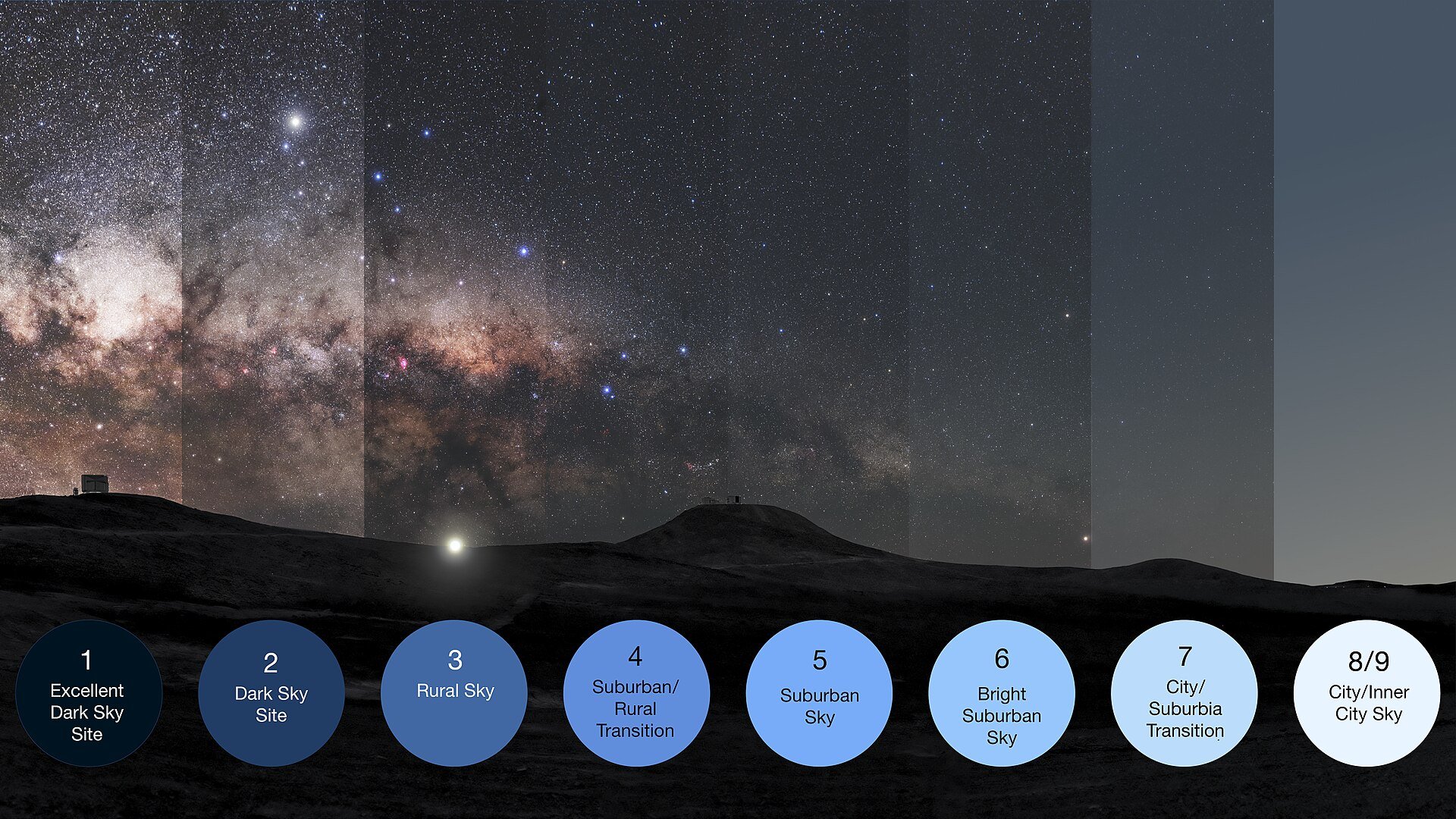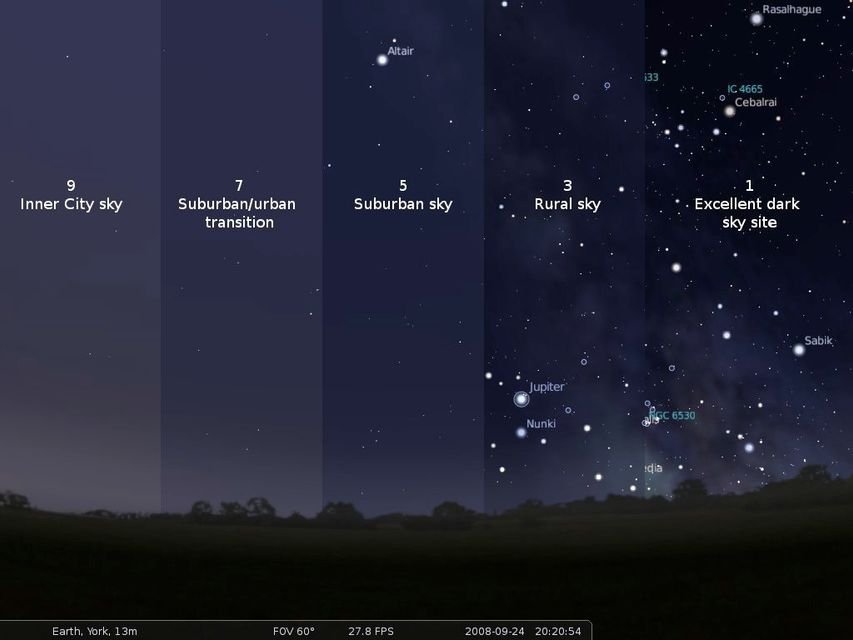Astrophotography Anywhere: Best Deep-Sky Targets for Light-Polluted and Dark-Sky Locations
Credit: ESO/P. Horálek, M. Wallner
Astrophotography isn’t just for those with access to pristine, dark skies. Whether you live under a heavily light-polluted city sky or travel to remote locations, there are deep-sky targets you can capture with stunning results. This guide will help you choose the best objects based on your location, along with tips on filters, exposure settings, and techniques to get the most out of your skies.
Unfortunately, light pollution is growing at a rapid pace and it is important to preserve our dark sky sites, raise awareness about the negative impacts of light pollution and using the right tools and techniques when photographing the night sky.
We published a great article by Or Graur about how light pollution has cut humanity’s ancient connection with the stars and how we can restore it. Read the full article here.
Astrophotography in Light-Polluted Areas
Shooting deep-sky images from the heart of a city or a suburban backyard can be challenging due to light pollution. However, some celestial objects are still within reach, especially if you use the right techniques.
Best Deep-Sky Objects for Light-Polluted Skies
Planetary Nebulae – Compact and bright, planetary nebulae like the Ring Nebula (M57) in Lyra or the Dumbbell Nebula (M27) in Vulpecula are great targets for city astrophotographers. Their small size means light pollution has a minimal effect.
Bright Emission Nebulae – Objects like the Orion Nebula (M42) or Lagoon Nebula (M8) are bright enough to cut through light pollution, especially when using narrowband filters.
Globular Clusters – Dense star clusters like M13 (Hercules Cluster) and M3 are excellent city-friendly targets due to their high surface brightness.
The Moon and Planets – While not deep-sky objects, planets like Jupiter and Saturn make for rewarding urban astrophotography subjects.
Tips for Light-Polluted Locations
Use Narrowband Filters: Dual-band and multi-band filters (such as Optolong L-eXtreme or Antlia Quad-Band) help isolate specific wavelengths, reducing light pollution's effects.
Shoot at Higher Altitudes: The higher an object is in the sky, the less atmosphere and light pollution interfere with your image.
Stacking and Calibration Frames: Capture more sub-exposures and use dark, flat, and bias frames to improve signal-to-noise ratio.
Shorter Exposures, More Frames: Long exposures in bright skies lead to washed-out images. Instead, take many short (30–120s) exposures and stack them for a clean result.
Time Your Sessions: Shoot when streetlights dim or turn off, usually in the early hours of the morning.
Astrophotography from Dark-Sky Locations
If you have access to a Bortle Class 3 or lower site, you’re in prime territory for capturing fainter deep-sky objects that are impossible to image from the city. Here’s what to aim for:
Best Deep-Sky Objects for Dark-Sky Sites
Faint Nebulae and IFN: Targets like the Integrated Flux Nebula (IFN), the Dark Horse Nebula can benefit hugely from darker skies.
Distant Galaxies: Capture the Andromeda Galaxy (M31), the Whirlpool Galaxy (M51), or even Markarian’s Chain in Virgo with incredible detail. Darker skies allow you to capture the faint spiral arms of galaxies in greater details.
Wide-Field Milky Way Shots: A DSLR or astro-modified camera can capture the stunning details of the Rho Ophiuchi Cloud Complex or the Cygnus region.
Dim Reflection Nebulae: Dim reflection nebulae such as NGC 1333 and The Iris Nebula require dark skies due to their faint structures.
Tips for Dark-Sky Locations
Go Wide for Milky Way Shots: Use a fast wide-angle lens (e.g., 14mm f/2) for breathtaking panoramic images of the Milky Way.
Longer Exposures: Unlike city imaging, here you can take 5–10 minute exposures to capture faint details of deep space objects without worrying about skyglow, providing that you can track the sky well. (Read our review of ZWO AM5N Tracking Mount)
Avoid the Moon: A bright moon washes out faint deep-sky objects. Plan sessions around the new moon phase.
Use a Star Tracker: For lighter equipment such as a camera and lens, devices like the Sky-Watcher Star Adventurer help track stars for pinpoint-sharp images on long exposures.
Monitor Sky Conditions: Dark skies still need good transparency and seeing for the best results—use apps like Clear Outside or Astrospheric to check forecasts.
What’s the Best Option for You?
| Location Type | Best Targets | Essential Equipment | Key Technique |
|---|---|---|---|
| City (Bortle 7–9) | Bright nebulae, globular clusters, planetary nebulae | Narrowband filters, light pollution filters | Short exposures, high frame stacking |
| Suburban (Bortle 4–6) | Brighter galaxies, reflection nebulae, larger nebulae | Broadband filters, longer exposure times | Moderate exposure length, careful post-processing |
| Dark Sky (Bortle 1–3) | Faint galaxies, dark nebulae, Milky Way panoramas | Wide-field lenses, cooled astro cameras | Long exposures, deep integration time |
Image Credit: James Madison University
Photo by Evgeni Tcherkasski
Final Thoughts
No matter where you are, astrophotography is possible with the right approach. Light-polluted skies still allow for planetary and deep space imaging, while dark-sky locations reveal the faintest cosmic secrects. Adapting your gear and techniques to your surroundings will ensure you get the best possible results—whether from a city balcony, countryside campsite or a mountaintop observatory.
Many astrophotographers, have even built their own backyard observatories in low light pollured areas, allowing them to image regularly without needing to travel. Drew Evans is one of those incredibly talented astrophotographers. You can read his astrophotography journey in our Spotlight Page.
Read more about humanity’s connection with the night sky here.
Are you capturing deep-sky images from a challenging location? Share your best shots and experiences with the Astromaniac Magazine community by using #AstromaniacMagazine on Instagram.










